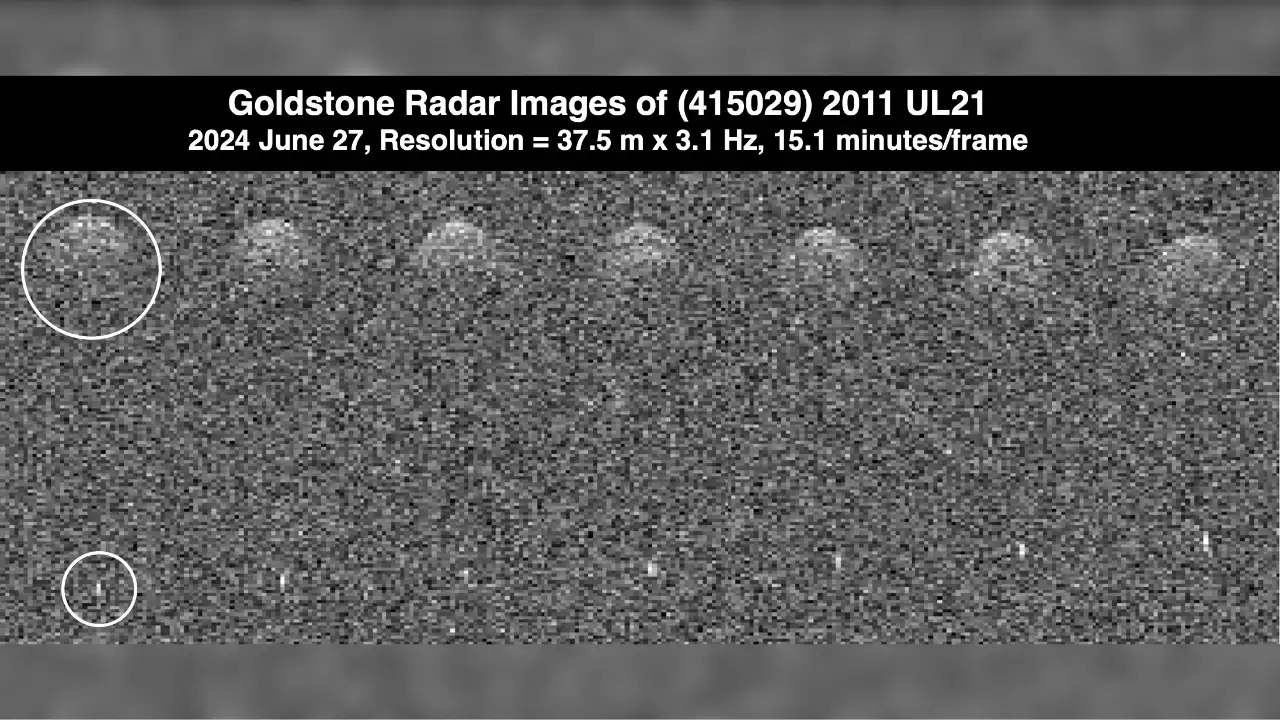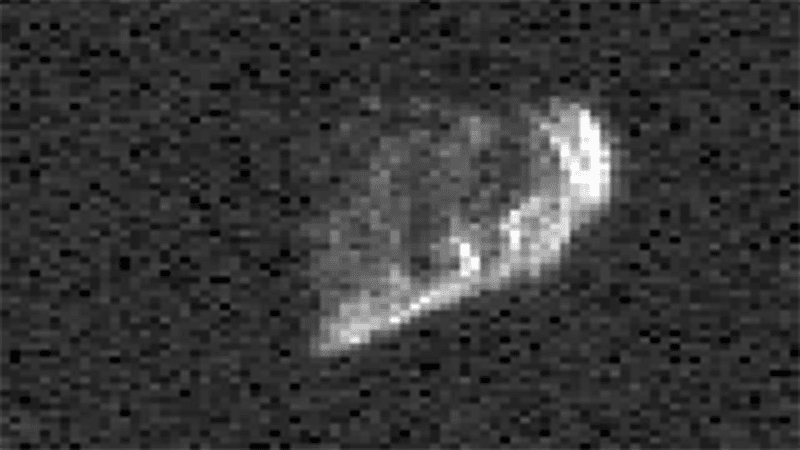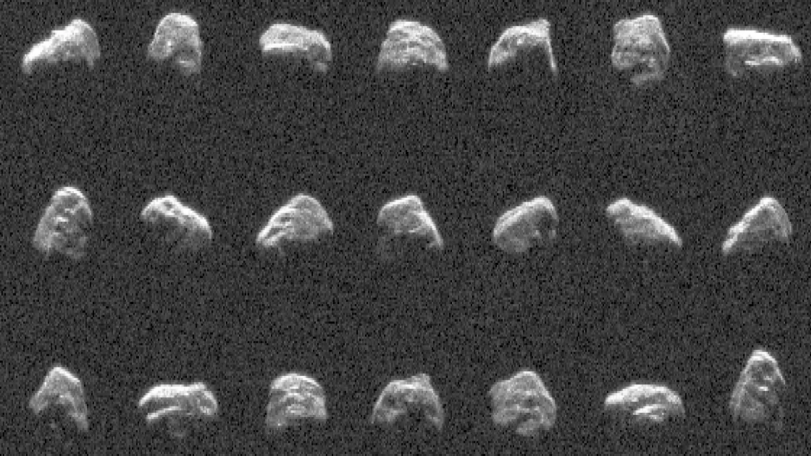NASA’s Jet Propulsion Laboratory (JPL) recently conducted radar observations of two asteroids, 2024 MK and 2011 UL21, as they passed Earth. Utilizing the Deep Space Network’s Goldstone planetary radar, these observations provided valuable data on the asteroids’ characteristics and behaviors.
One of the asteroids, 2011 UL21, was found to have a small moon orbiting it, while 2024 MK was a recent discovery, having been identified just 13 days prior to its closest approach to Earth.
Asteroid 2011 UL21, which passed Earth on June 27 at a safe distance of 4.1 million miles, was originally discovered in 2011. This near-mile-wide object was imaged by radar for the first time during its recent approach.
Using the 230-foot-wide Goldstone Solar System Radar, JPL scientists determined that 2011 UL21 is roughly spherical and is accompanied by a smaller moonlet. The discovery of this binary system is significant for understanding the formation and characteristics of similar asteroids.

Two days later, on June 29, the team observed asteroid 2024 MK as it came within 184,000 miles of Earth. This asteroid, about 500 feet wide, displayed an elongated and angular shape. Using a combination of Goldstone’s DSS-14 and DSS-13 antennas, the scientists were able to obtain detailed images of the asteroid’s surface, revealing features such as concavities, ridges, and boulders. The close proximity of 2024 MK allowed for extensive data collection, which is rare for objects of this size.
The observation of 2024 MK, first reported by the ATLAS program on June 16, highlighted its orbital changes due to Earth’s gravitational influence. This encounter altered the asteroid’s orbit around the Sun, reducing its period by approximately 24 days. Despite being classified as potentially hazardous, future calculations indicate that 2024 MK does not pose a threat to Earth in the near term.

The radar observations conducted by the Goldstone Solar System Radar Group, supported by NASA’s Near-Earth Object Observations Program, contribute significantly to planetary defense efforts. By providing detailed information about the physical properties and trajectories of these near-Earth objects, researchers can better understand their potential threats and develop strategies for mitigating any future risks.

